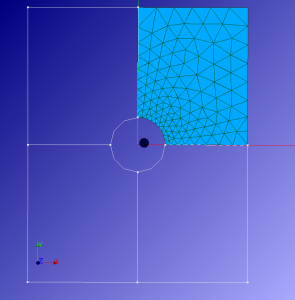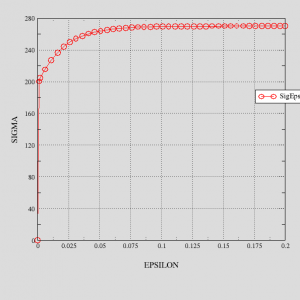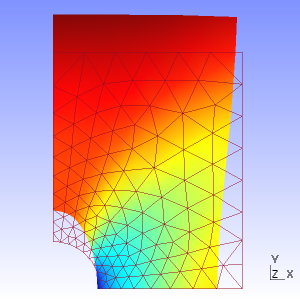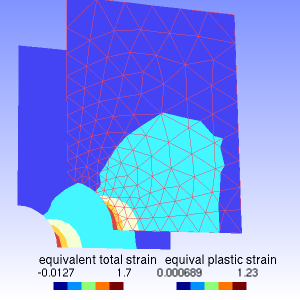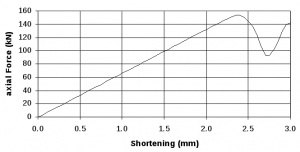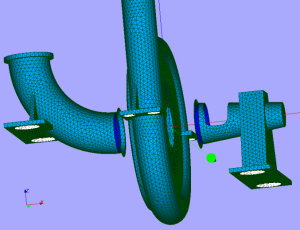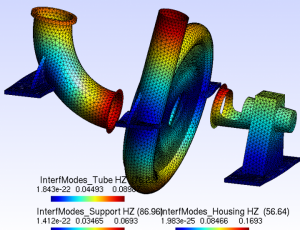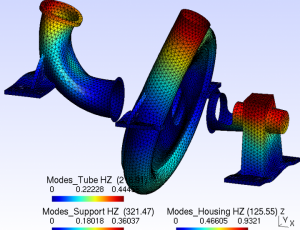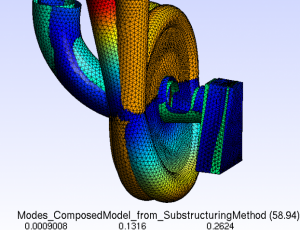Finite Element Analysis
How we approach an analysis project . .
These are the steps which we consider essential:
- discussing with you your project in detail
- doing the simulation: creation or import of geometry, meshing (or importing an existing mesh from you), developing the command-file, analysis, checks, postprocessing. If needed: model changes or parameter studies etc.
- technical report and / or delivery of input and output files
- review of the project
Plastic yielding plate, calculated with arclength method (Code-Aster)
A plate with a circular hole is under vertical traction load. Elastoplastic material, large displacement and large strain are considered.
Postbuckling Analysis (Abaqus)
The panal below is stiffened with stringers and completely made from composite material. Two stringers have locally detached from the panel due to glue failure. The structure has therefor much less resistence against buckling.
Substructuring in Dynamic Analysis
Substructuring helps to reduce drastically the size of a model, CPU-time and RAM. The 2 figures at the top show a pump model, divided in 3 parts (Code-Aster testcase "forma13"). The mounting pads (where the model is fixed on ground) and the interfaces (where the substructures are mounted together) are shown in white colour. Here the substructuring method of "Craig-Bampton with interface modes" is employed: In a 1st step each substructure is subjected to a modal analysis, with both, mounting pads and interfaces fixed. Figure 3 shows each substructure's 1st mode shape. In the 2nd step the interface modes are calculated for each substructure. Figure 4 shows the 1st interface mode of each of them. All modes and interface modes of the 3 substructures form together the modal basis of the composed model. Figure 5 shows the 1st mode of the composed model. The composed modal basis was built here from 10 modes and 30 interface modes per substructure, leading to 3x(10+30)=120 degrees of freedom. The error with respect to a direct modal analysis of the complete model is less than 1.5 pct for the first 10 natural frequencies.
Code-Aster disposes of several substructuring methods: the classic Craig-Bampton, the MacNeal-method, the "Craig-Bampton method with interface modes" (presented above) and substructuring for cyclic symmetry. Modal, harmonic and transient response analyses can be done with the reduced models. The substructures do not need to have coincident meshes at their interaces nor do they need to be in the same coordinate system. Thus, substructures can have been prepared by different persons or come from different collaborating companies. A substructure (known also as superelement) can also be exported in ASCII-format for the use in another program. Using substructuring it cannot happen (as with the usual modal reduction method) that parts of the system which vibrate at higher frequencies than others drop out of the modal basis.

